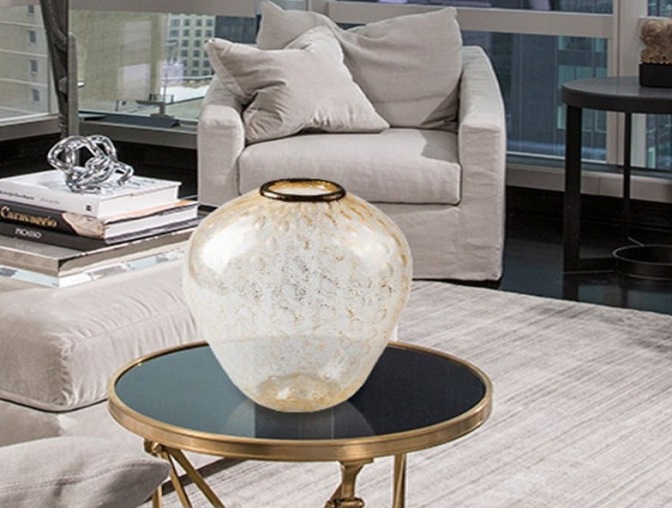Murano Glass: A Timeless Treasure of Art and Craftsmanship
Murano glass is a type of glass that is produced on the island of Murano, near Venice, Italy. It is renowned for its exquisite craftsmanship and artistic value, and it has a long and rich history that spans over a thousand years. In this article, we will explore the fascinating world of Murano glass, and discover why it is so special and how you can find and enjoy its beauty.
What is Murano Glass and What is its Purpose?
Murano glass is not just any glass. It is a glass that is made with a specific technique that involves melting silica sand with other minerals and substances, such as soda, lime, potassium, and various metal oxides, in a furnace at very high temperatures. The molten glass is then shaped and blown by skilled artisans using metal rods and wooden tools, creating various forms and designs. The glass can also be colored, decorated, or enriched with other materials, such as gold, silver, or millefiori (thousand flowers), which are thin slices of glass rods with multicolored patterns. Glass renowned for its meticulous craftsmanship and exquisite designs, has emerged as a popular choice for corporate gifts to any business occasion or celebration.
The purpose of Murano glass is to create objects of beauty and functionality, such as sculptures, vases, chandeliers, mirrors, jewelry, and more. Murano glass is also a form of artistic expression, as each piece reflects the creativity and style of the glassmaker. Murano glass is often used to decorate homes, offices, hotels, restaurants, and other spaces, adding a touch of elegance and sophistication. It is also a valuable and collectible item, as it represents the tradition and culture of Venice and its glassmaking heritage.
Where Does Murano Glass Come From and How Did it Evolve?
The origin of Murano glass dates back to the 8th century, when glassmakers from the Middle East, especially Syria and Egypt, brought their knowledge and skills to Venice, which was then a flourishing trade center and part of the Byzantine Empire. Venice soon became a leading producer of glass, and its glassmakers developed new techniques and styles, such as enameling, gilding, and filigree.
However, in 1291, the Venetian government decided to move all the glass workshops to the island of Murano, for two main reasons: to prevent the risk of fire in the city, which had many wooden buildings, and to protect the secrets and monopoly of the glass industry, which was a source of wealth and prestige for Venice. The glassmakers were given privileges and incentives, but they were also forbidden to leave the island or share their knowledge with outsiders.

On Murano, the glass industry flourished and reached its peak in the 16th century, when Murano glass was exported and admired all over Europe and beyond. Murano glassmakers invented and perfected many types of glass, such as cristallo (transparent and clear glass), lattimo (opaque white glass), avventurina (glass with sparkling metal particles), calcedonio (glass with multicolored swirls), and filigrana (glass with thin white or colored threads). They also created magnificent works of art, such as chandeliers, mirrors, goblets, and beads.
In the following centuries, Murano glass faced some challenges and crises, due to wars, economic decline, competition, and imitation. However, it never lost its charm and reputation, and it always managed to revive and innovate, thanks to the talent and passion of its glassmakers. In the 19th and 20th centuries, Murano glass witnessed a new wave of artistic and technical experimentation, influenced by modern art movements and collaborations with famous artists, such as Pablo Picasso, Marc Chagall, and Jean Cocteau. It also became more accessible and popular, thanks to the development of tourism and mass production.
Today, Murano glass is still a symbol of excellence and quality, and it continues to evolve and surprise with its variety and originality. Murano glass is also a living tradition, as it is still made by hand on the island, following the ancient methods and secrets that have been passed down from generation to generation.
What are the Different Kinds of Murano Glass?
It is not a single kind of glass, but a collection of different kinds, each with its own characteristics, techniques, and effects. Here are some of the most common and famous kinds of glass:
- Cristallo: This is the most pure and transparent glass, invented by Angelo Barovier in the 15th century. It is made by purifying the raw materials and eliminating any impurities or bubbles. It is often used for delicate and refined objects, such as goblets, vases, and sculptures.

- Lattimo: This is a milky white glass, resembling porcelain, invented by the same Angelo Barovier. It is made by adding tin or zinc oxide to the glass mixture. It is often used for decorative objects, such as bowls, plates, and figurines, or for enamel painting on glass.

- Avventurina: This is a glass with sparkling metal particles, usually copper, creating a starry effect. It is made by adding copper crystals to the glass mixture, and then cooling and reheating it several times. It is often used for jewelry, such as earrings, necklaces, and bracelets, or for embellishing other glass objects.

- Calcedonio: This is a glass with multicolored swirls, resembling marble or semi-precious stones. It is made by adding various metal oxides, such as iron, manganese, cobalt, and nickel, to the glass mixture, and then stirring it in a specific way. It is often used for sculptures, vases, and bowls, or for making murrine, which are cross-sections of glass rods with patterns.

- Filigrana: This is a glass with thin white or colored threads, creating a net-like or spiral effect. It is made by fusing together glass rods with different colors, and then stretching and twisting them. It is often used for vases, bowls, and cups, or for making beads and millefiori.

- Pulegoso: This is a glass with tiny bubbles, creating a frosted or bubbly effect. It is made by adding bicarbonate of soda or oil to the glass mixture, and then releasing carbon dioxide. It is often used for vases, bowls, and lamps, or for making beads and murrine.

- Ghiaccio: This is a glass with a cracked appearance, resembling ice. It is made by immersing hot glass in cold water, and then reheating it several times. It is often used for lamps, candle holders, and vases, or for making beads and millefiori.
- Sommerso: This is a glass with several layers of different colors, creating a submerged or floating effect. It is made by dipping a glass object into another molten glass of a different color, and then repeating the process with other colors. It is often used for vases, bowls, and sculptures.

These are just some of the many kinds of glass, and each one can be combined or modified to create endless variations and possibilities.
Why Choose Murano Glass?
There are many reasons to choose Murano glass, whether you are looking for a gift, a souvenir, a decoration, or a collection item.
Here are some of the main reasons why glass is so special and desirable:
-
It is authentic and original.
It is made only on the island of Murano, by certified and qualified glassmakers, who follow the traditional methods and techniques that have been handed down for centuries. Each piece of Murano glass is unique and handmade, with its own shape, color, and design. Murano glass also comes with a certificate of origin and a trademark, which guarantee its quality and provenance.
-
It is beautiful and elegant.
It is a feast for the eyes, with its brilliant colors, intricate patterns, and dazzling effects. Murano glass can enhance any space, from a classic to a modern style, with its charm and sophistication. Glass can also suit any taste, from simple to elaborate, from minimal to extravagant, from abstract to realistic, from traditional to contemporary.
-
It is durable and valuable.
It is made with high-quality materials and craftsmanship, which make it resistant and long-lasting. Murano glass does not oxidize, rot, or decay, and it can preserve and increase its value over time. Glass is also an investment and a collectible item, as it represents the history and culture of Venice and its glassmaking heritage.
Where to Find Murano Glass Vases?
If you are interested in buying or admiring glass vases, there are several options and places where you can find them.
Here are some of the most common and convenient ones:
-
Online:
You can browse and shop for Murano glass vases online, from the comfort and convenience of your home. There are many websites and platforms that offer a wide range of Murano glass vases, from different periods, styles, and prices. You can also compare and contrast different options, read reviews and feedback, and get more information and details about each product. However, you should always make sure that the website or platform is reliable and trustworthy, and that the Murano glass vases are authentic and certified, with a certificate of origin and a trademark. You should also check the shipping and return policies, and the customer service and support.
-
In Venice:
You can also find Murano glass vases in Venice, the city where Murano belongs. There are many shops and galleries that sell Murano glass products, especially in the areas of San Marco, Rialto, and Cannaregio. However, you should be careful and avoid buying fake or low-quality glass, which is often sold by street vendors or souvenir shops. You should always look for the certificate of origin and the trademark, and ask for the name and location of the glassmaker.
-
In Museums:
You can also admire Murano glass vases in museums, where you can learn more about the history and art of glassmaking. Some of the most famous museums that display glass collections are:
- The Glass Museum (Museo del Vetro) on Murano island, which showcases the evolution and techniques of glass from the ancient times to the present day.
- The Corning Museum of Glass in New York, which has one of the largest and most comprehensive collections of glass in the world, including many glass masterpieces.
- The Victoria and Albert Museum in London, which has a rich and diverse collection of glass from different countries and periods, including many examples of it.
I hope this helps you find and enjoy Murano glass vases. If you have any other questions or topics you want to chat about, please let me know.





Leave a Reply